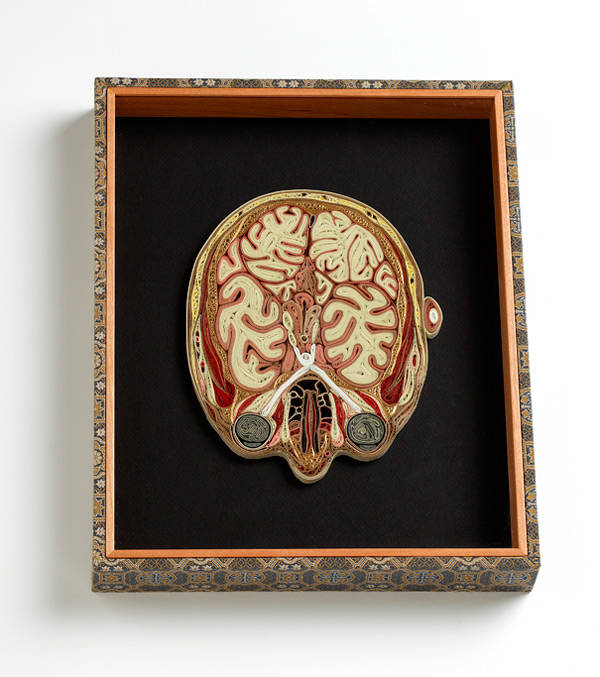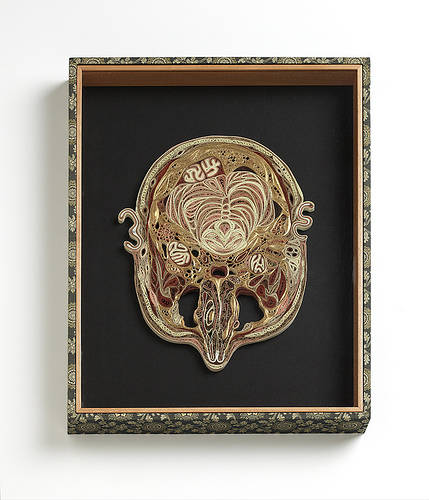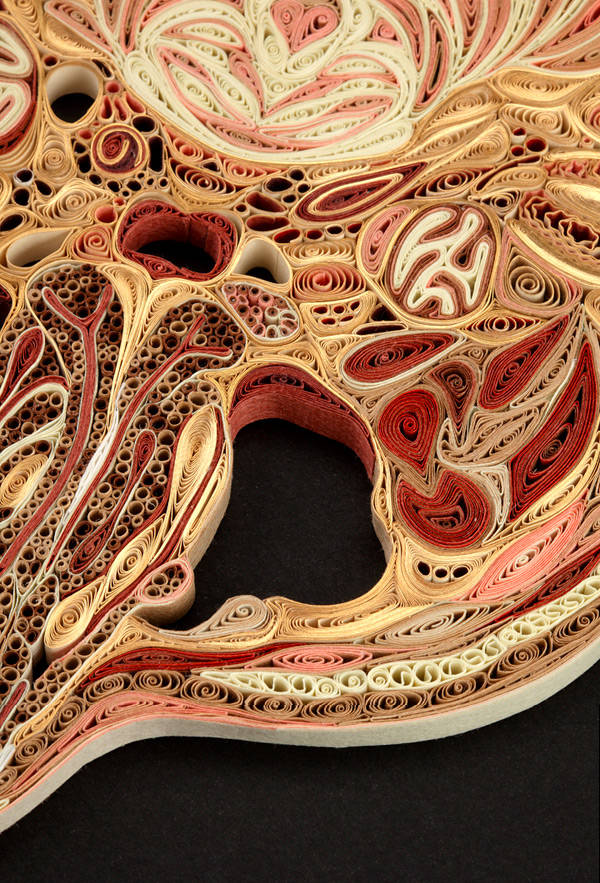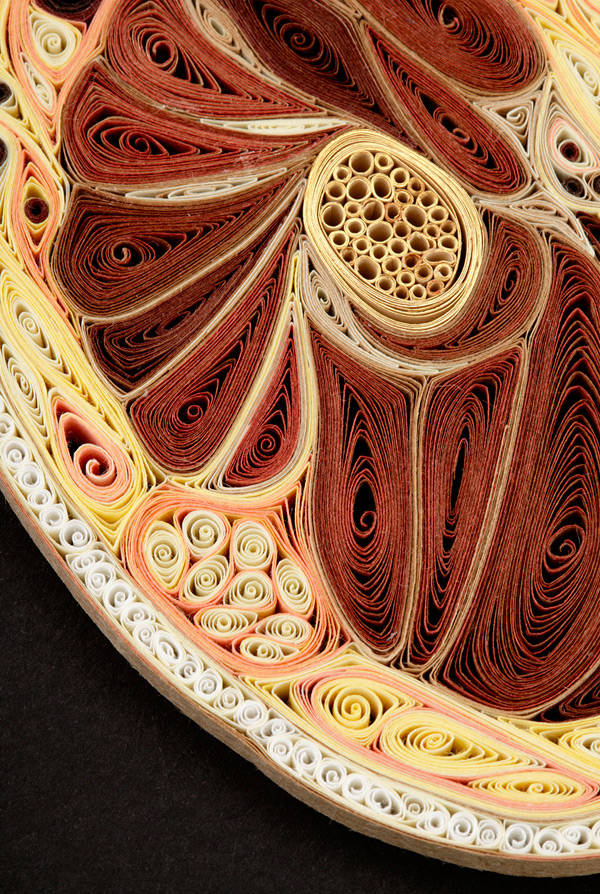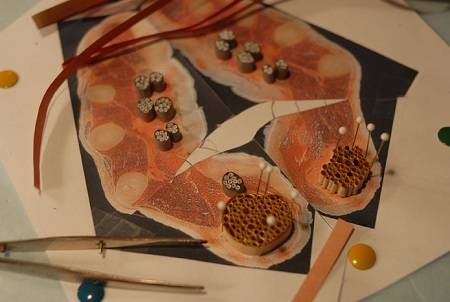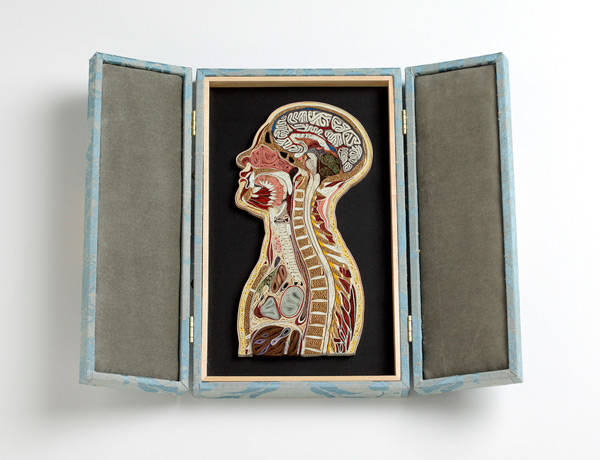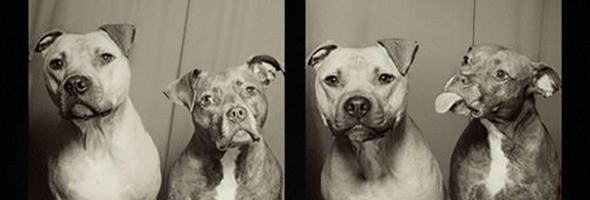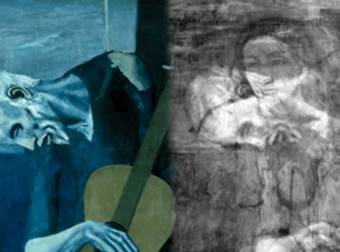If you’re familiar with painting, drawing and other types of crafting, you should get familiar with quilling. Quilling, also known as paper filigree, is the process of rolling strips of paper to create designs. The process is painstaking and takes quite a while to do, as Massachusetts-based artist Lisa Nilsson knows. Though she’d been aware of the practice since the ’70s, she first thought to use it for art projects after seeing a religious reliquary in an antique shop. The rest was history, and has resulted in some fascinating work. Especially notable is her Tissue series, which depicts the human body’s interior in minute detail.
Nilsson began using the technique to create intricate art projects, such as her 2012 Tissue Series, in which she recreated cross-sections of the human body out of rolled strips of Japanese mulberry paper of varying colors. She uses photos for reference, and winds the paper around pins, needles, dowels and drill bits to create the tight spirals seen in her work. Once the paper is rolled to the proper shape, it’s arranged on a surface, and, in Nilsson’s case, creates the bones, muscles and organs that make up a human body.
Quilling dates back to Renaissance-era France and Italy, where it was practiced by nuns and monks to create mainly religious scenes. Nilsson’s take on the craft probably isn’t too different, but for the subject matter and some 21st century materials. She creates her pieces, which she calls “assemblages,” directly on top of a photo reference, pinning the rolls of paper down to keep their place. When the pieces are complete, she glues everything down and places it in a wooden box–which she also makes by hand–for display.
So what draws Nilsson to the human interior? She’s actually inspired by quilling’s religious background, but brings it to a more earthly realm. “I like to emphasize the reverential and the precious; to have a look inside is such a privilege,” she explains in an interview with ArtSake. She also appreciates the physical aspect of quilling in relation to the human body in a quite literal sense. “We are so symmetrical on the outside and so asymmetrical on the inside and everything inside fits so perfectly. This is the connection I made to quilling. Rolled pieces of paper are amenable to being squeezed, shaped and shifted to fill a space.”

